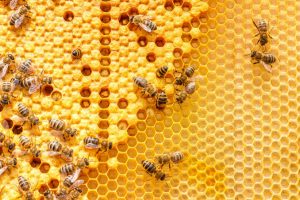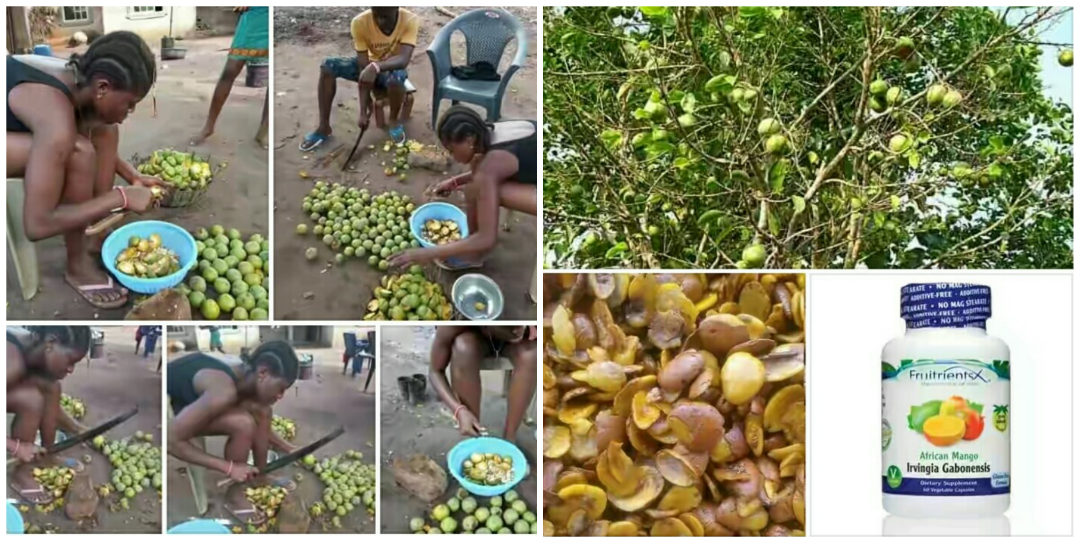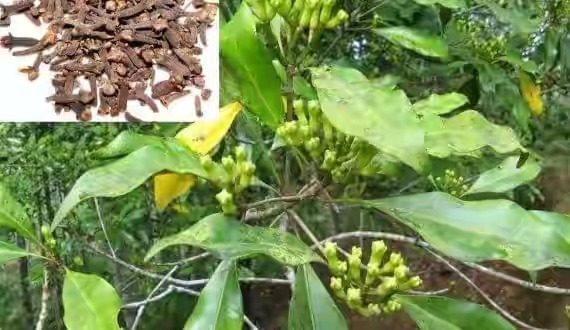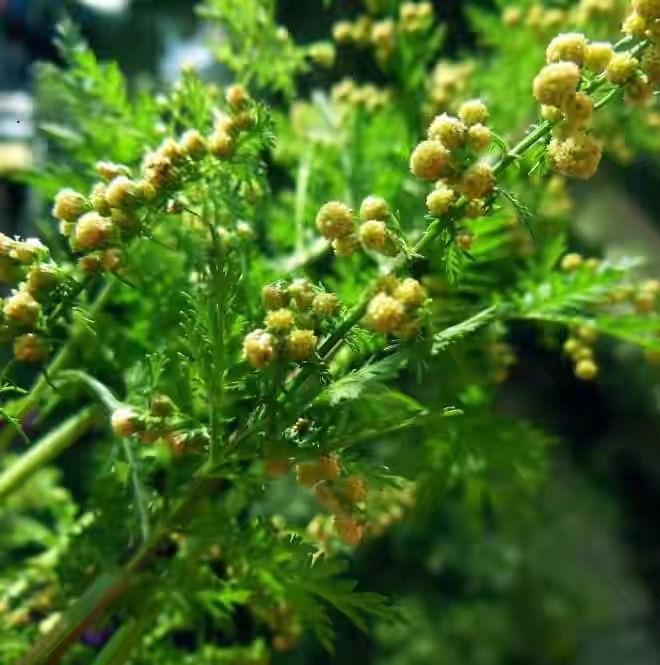APITHERAPY: Health benefits of Bee Products (Honey, Beeswax, Pollen, Propolis, Bee Venom & Royal Jelly)
Bees and bee products in health and disease: Apitherapy
APITHERAPY IN ANCIENT TIMES AND RELIGIONS:
Apitherapy or “Bee therapy” (from the Latin apis which means bee) is the medicinal use of products made by honeybees. Products of the Honeybee include honey, pollen, beeswax, propolis, royal jelly and bee venom. Apitherapy has ancient origins: the first known prescription using honey was written on a clay tablet, found in the Euphrates valley and dating from somewhere between 2100 and 2000 BC.
There are records from ancient Egypt and ancient India of using honey in treating wounds. Hippocrates, the ancient Greek physician and ‘father of medicine’ listed the physical effects of honey: “It causes heat, cleans sores and ulcers, softens hard ulcers of the lips, and heals carbuncles and running sores”. Important religious texts all refer to honey and its healing powers.
For Jewish people the Promised Land is described as “a country which abounds in olive oil and in honey” (Deuteronomy 8:8). In the Sanskrit Veda of ancient India, honey is a remedy for many disorders.
For Christians, the Bible has many references, and in Islam, honey is a precious medicine. Sura 16 of the Koran mentions the origin of honey and its therapeutic qualities, “It comes forth from their bellies: a liquid of various colours, with healing for mankind”.
Nowadays, the virtues of bee products are extolled by some, especially those interested in alternative and complementary medicines, who describe the use of honey, pollen, propolis, wax, royal jelly and venom for medicinal purposes as apitherapy.
Others will say that claims for the therapeutic benefits of bee products have not been subject to critical, scientific scrutiny.
APITHERAPY: Health benefits of Bee Products (Honey, Beeswax, Pollen, Propolis, Bee Venom & Royal Jelly)
Bees and beekeeping contribute to peoples’ livelihoods in almost every country on earth. Honey and the other products obtained from bees have long been known by every society. The diversity in bee species, their uses and in beekeeping practices varies greatly between regions.
In many parts of the world, significant volumes of honey are today still obtained by plundering wild colonies of bees, while elsewhere beekeeping is practised by highly skilled people. Beekeeping is an ancient tradition, and honey bees have been kept in many parts of the world for several millennia.
Bees are critically important in the environment, sustaining biodiversity by providing essential pollination for a wide range of crops and wild plants.
They contribute to human health and wellbeing directly through the production of honey and other food and feed supplies such as: pollen, wax for food processing, propolis in food technology, and royal jelly as a dietary supplement and ingredient in food.
The Food and Agriculture Organization of the United Nations (FAO) estimates that of the 100 CROP SPECIES THAT PROVIDE 90% OF FOOD WORLDWIDE, 71 ARE POLLINATED BY BEES. The majority of crops grown worldwide depend on insect pollination.
Beyond the essential value of pollination to maintaining biodiversity, the global annual monetary value of pollination has been estimated at hundreds of billions of euros.
Aristotle called honey the nectar of the gods. Throughout history, ra honey, bee pollen, propolis, and royal jelly have been valued as both food and medicine. Science now confirms this ancient wisdom.
HONEY AS MEDICINE:
Honey has traditionally been regarded as a medicine or tonic, rather than an everyday food. Today honey is once again increasingly recognised for its healing and anti-bacterial properties when taken orally, or applied as a treatment for wounds and burns. For example, many societies know honey and lemon as an elixir to relieve sore throats.
Today there is scientific explanation: the vitamin C of the lemon has immune stimulating and anti-infective effects, while the honey has medicinal power. The most common bacterium known to cause sore throats is Streptococcus pyogenes, and laboratory experiments have proved that some types of honey can inhibit the growth of this bacterium.
Another bacterium that honey has been shown to inhibit is Helicobacter pylori (H. pylori) – a causative factor in ulcers. Therefore, honey can be regarded for both prevention and management of gastric ulcer caused by H. pylorum.
Furthermore, both honey and propolis have anti-ulcerous capacity, and this ability is attributed to the phenolic compounds, particularly the flavonoids including especially campherol, quercetin, hesperitin and naringin.
It was suggested that flavonoids increase the mucosal content of prostaglandins, which protects the gastric mucosa and thus prevents the occurrence of ulceration.
Another mechanism proposed for the anti-ulcer effect of flavonoids is that ulcers are associated with the reactive oxygen species, and flavonoids inhibit them, protecting the gastric mucosa. Honey has a number of constituents and properties that can result in healing properties.
These include its acidity, enzymatic activity, hydrogen peroxide and high osmotic potential. One of the enzymes present in honey is glucose oxidase. This enzyme is produced by the bees’ hypopharyngeal (head) glands. When honey is diluted, the enzyme is activated and oxidises glucose to generate gluconic acid and hydrogen peroxide.
The high osmotic potential of honey is due to its high sugar concentration: this means that it has an osmotic effect, which can lead to the breakdown of bacterial membranes, thus inhibiting microbial growth.
Honey can be also put to use in healing skin and drying out wounds: its anti-bacterial properties and physical composition, maintaining moist conditions and allowing oxygen to pass, is good for preventing infections, reducing inflammation and promoting rapid healing.
Honey also contains compounds derived from the flowers on which bees were foraging: these may be flavonoids and active phenols, well known for their antibacterial properties.
Many studies established that the dark honeys of the coniferous forests have a strong antibacterial activity. Examples of antibacterial honeys are the Australian honey of Leptospermum polygalifolium and the well-known manuka honey Leptospermum scoparium of New Zealand.

Honey is said to facilitate better physical performance and resistance to fatigue, particularly for repeated effort; it also promotes higher mental efficiency. It is therefore used by both the healthy and the sick for any kind of weakness, particularly in the case of digestive or assimilative problems.
Improved growth of non-breast fed newborn infants, improved calcium fixation in bones and curing anaemia and anorexia may all be attributed to some nutritional benefit or stimulation from eating honey.
Clinical cases or traditional claims that honey reduces and cures eye cataracts, cures conjunctivitis and various afflictions of the cornea if applied directly into the eye are known from Europe, Asia, and Central America. This is said to be truer for Meliponid and Trigonid honeys from South and Central America and India.
There are also case histories of keratitis rosacea and corneal ulcers, healed with pure honey or a 3% sulphidine ointment in which Vaseline was replaced by honey.
Traditional, but well-studied medicinal systems, such as the ayurvedic medicine of India, use honey predominantly as a vehicle for faster absorption of various drugs like herbal extracts.
Secondarily, it is also thought to support the treatment of several more specific ailments, particularly those related to respiratory irritations and infections, mouth sores and eye cataracts. It also serves as a general tonic for newborn infants, the young and the elderly, the convalescent and hard-working farmers
NATURALLY OCCURRING ANTIBIOTIC IN HONEY:
The antibiotic streptomycin has been found in honey. Streptomycin is produced by bacteria belonging to the genus Streptomyces: these bacteria are common and widespread.
Streptomycetes have been discovered in samples collected from the miombo woodland in Zambia, in places frequented by bees, such as hollows in trees, water holes and leaf mould.
It is also known from research that ants and Streptomycetes have a highly evolved relationship: some leaf cutter ants have white spots on their bodies – these spots are colonies of a Streptomyces species, producing an antibiotic to protect the ant colony’s food sources from other pathogens.
Could bees also have evolved a way to harness the benefits of the antibiotic streptomycin?
BEESWAX:
In the past beeswax was used in medicine, mainly as a carrier for other ingredients, and in salves and poultices.
Today beeswax is used extensively in the pharmaceutical and cosmetics industries in ointments, skin creams and pills.
Within the field of alternative medicine, beeswax is once again forming part of various medicines.
There are some claims that it has antibiotic properties, and can be used in the treatment of arthritis and nasal inflammations.
POLLEN:
Bee pollen is the male seed of a flower blossom which has been gathered by the bees and to which special elements from the bees has been added. The honeybee collects pollen and mixes it with its own digestive enzymes.
Pollen is certainly very important in the nutrition of honeybees, and some people make great claims for the nutritional value of pollen as being one of the most complete foods in nature.
It certainly has all the right ingredients, containing around 30 percent protein and including all the amino acids essential for human diets, a full spectrum of vitamins and minerals, trace elements, hormone precursors, carbohydrates and fatty acids.
It is possible that pollen provides valuable trace elements to supplement deficient diets. ‘Believers’ in pollen say that it gives them energy, fights exhaustion and depression, and ensures resistance against colds and flu.
PROPOLIS:
Propolis is a mixture of various amounts of beeswax and resins collected by the honeybee from plants, particularly from flowers and leaf buds. Propolis is particularly valued as a remedy for toothache, and is sold in toothpastes and chewing gums.
One possibility is that it works by inhibiting the enzyme glucosyltransferase of the bacterium Streptococcus mutans (bacterium responsible for tooth decay). This bacterium produces lactic acid in the mouth that decays tooth enamel.
ROYAL JELLY:
Worker bees and queen bees start life as identical eggs laid by the parent queen. Whether an egg develops into a worker bee or a queen bee is determined by the way it is fed.
Queen bee larvae are fed with copious amounts of royal jelly, and subsequently adult queen bees differ in many respects from adult worker bees: the queen alone is fertile, will mate and will lay eggs very prolifically. She will live much longer than her sister worker bees.
Royal jelly is therefore a potent food as far as developing honeybees are concerned. Some people credit royal jelly with remarkable powers for humans and other animals too: however, opinions differ and some people argue that there is no scientific support.
Certainly, royal jelly is a concentrated source of many nutrients, including all the B vitamins, as well as vitamins A, C, D and E and essential fatty acids.
BEE VENOM THERAPY:
This is therapy using live bees, applied directly to the patient. Hippocrates referred to the medical use of bee venom, and still today, many beekeepers believe that bee stings are beneficial for the treatment of rheumatoid arthritis: it is often stated that few beekeepers suffer from this disease. However, this is anecdotal evidence.
Despite the lack of scientific confirmation that sting therapy benefits chronic, incurable diseases, some sufferers of multiple sclerosis and rheumatoid arthritis are convinced that it does help.
Venom therapy is also claimed beneficial for the relief of pain from tendon injuries, repetitive strain injury and other muscle injuries.
Bee venom is now marketed in capsule form, making venom therapy available without the patient having to receive bee stings.
One explanation for the beneficial effects of bee stings may be that it is a form of acupuncture. Indeed, some Chinese practitioners combine the two sciences into api-acupuncture.
Acupuncture is widely recognised as a useful technique for relieving pain: it is believed that the acupuncture needles stimulate nervous pathways that cause the release of endorphins that are pain-relieving opioid substances.
It seems possible that a bee sting could cause stimulation of endorphin production in a way similar to an acupuncture needle.
Venom is a complex mixture of proteins and amino acids, enzymes, sugars and lipids. One polypeptide, melittin, is a major component of venom, and in humans it has the effect of stimulating the adrenal cortex (part of the adrenal gland) to release cortisol, a hormone associated with reducing inflammations and healing responses.
This may also in part explain venom’s apparent success in easing inflammatory ailments.
FOR FURTHER READING ON HEALTH BENEFITS OF BEE PRODUCTS (HONEY, BEESWAX, POLLEN,
PROPOLIS, BEE VENOM & ROYAL JELLY) SEE
1. Alvarez-Suarez JM, Giampieri F, Battino M. Honey as a source of dietary antioxidants: structures, bioavailability and evidence of protective effects against human chronic diseases. Curr Med Chem 2013; ;20(5):621-638.
2. Premratanachai P, Chanchao C. Review of the anticancer activities of bee products. Asian Pac J Trop Biomed 2014; 4(5):337-344.
3. Son DJ, Lee JW, Lee YH, Song HS, Lee CK, Hong JT. Therapeutic application of anti-arthritis, pain-releasing, and anti-cancer effects of bee venom and its constituent compounds. Pharmacol Ther 2007; ;115(2):246-270.
4. Ulbricht C, Conquer J, Giese N, Khalsa KPS, Sklar J, Weissner W, et al. An evidence-based systematic review of bee pollen by the Natural Standard Research Collaboration. J Diet Suppl 2009; 6(3):290-312.
5. Viuda-Martos M, Ruiz-Navajas Y, Fernández-López J, Pérez-Alvarez J. Functional properties of honey, propolis, and royal jelly. J Food Sci 2008; 73(9):R117-R124.
These are the thoughts and intellectual property of:
Professor Sa’eed Halilu Bawa
Senior Lecturer at University of the West Indies, St. Augustine Campus, Trinidad.
Studied Food and Nutrition Sciences, Dietetics at Kaduna Polytechnic, Nigeria; Warsaw University of Life Sciences, Poland.
Featured Image: Food Business
























